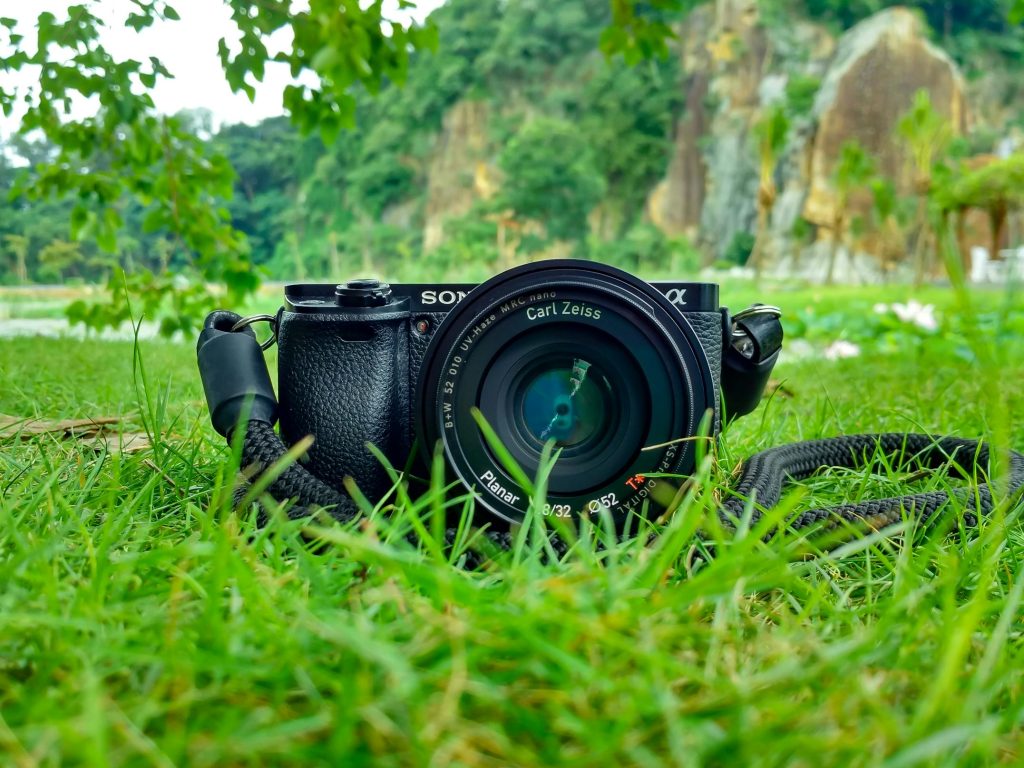Table of Contents
Digital Single-Lens Reflex (DSLR) cameras have revolutionized photography, offering enthusiasts and professionals alike powerful tools to capture stunning images with exceptional clarity and creative control. This article delves into the features, benefits, and versatility of DSLR cameras, highlighting their impact on photography and their enduring appeal in the digital age.

Understanding DSLR Cameras
DSLR cameras combine the mechanisms of traditional single-lens reflex cameras with digital imaging sensors, allowing photographers to preview and capture high-resolution images through a single lens. These cameras are prized for their optical viewfinders, interchangeable lenses, and advanced imaging capabilities, making them versatile tools for various genres of photography.
Key Features of DSLR Cameras
1. Optical Viewfinder: DSLRs feature optical viewfinders that use a mirror mechanism to reflect the scene directly through the lens. This provides a clear, real-time view of the subject without digital processing, aiding in precise composition and focus.
2. Interchangeable Lenses: One of the defining features of DSLR cameras is their compatibility with interchangeable lenses. Photographers can choose from a wide range of lenses, including wide-angle, telephoto, macro, and specialty lenses, to achieve different perspectives and creative effects.
3. Image Sensor: DSLRs typically use larger image sensors compared to compact digital cameras, resulting in higher image quality, better low-light performance, and greater dynamic range. Common sensor sizes include APS-C (Crop Sensor) and Full-frame (35mm).
4. Manual Controls: DSLRs offer extensive manual controls over exposure settings, including aperture, shutter speed, and ISO sensitivity. This level of control allows photographers to fine-tune their shots and adapt to various lighting conditions and creative preferences.
5. Speed and Performance: DSLRs are known for their fast autofocus systems, burst shooting capabilities (continuous shooting mode), and minimal shutter lag. These features are essential for capturing fast-moving subjects, such as sports and wildlife photography.
6. Durability and Ergonomics: Designed for professional use, DSLRs are often built with robust, weather-sealed bodies that withstand challenging shooting environments. Ergonomic grips and intuitive button layouts ensure comfortable handling during extended shooting sessions.

Advantages of DSLR Cameras
1. Image Quality: DSLRs produce high-resolution images with excellent color reproduction, sharpness, and detail, thanks to their larger sensors and superior optics.
2. Versatility: With a wide range of interchangeable lenses and accessories available, DSLRs are suitable for various photography genres, including portrait, landscape, macro, sports, and wildlife photography.
3. Creative Control: Manual exposure controls, customizable settings, and the ability to shoot in RAW format (uncompressed) give photographers extensive creative control over their images during post-processing.
4. Optics and Lenses: The availability of high-quality lenses from reputable manufacturers allows photographers to achieve specific artistic effects, such as shallow depth of field (bokeh) and perspective distortion.
5. Longevity and Investment: DSLRs are designed to be durable and upgradeable, making them a long-term investment for photographers who prioritize quality and performance.

Considerations When Choosing a DSLR
1. Cost: DSLR cameras range in price from affordable entry-level models to professional-grade options. Consider your budget and future upgrade paths when selecting a DSLR.
2. Size and Weight: DSLRs tend to be larger and heavier than compact cameras and mirrorless cameras. Evaluate portability versus handling comfort based on your photography needs.
3. Learning Curve: Mastering DSLR photography requires learning fundamental concepts of exposure, composition, and lens selection. Dedicate time to practice and familiarize yourself with camera settings and techniques.
4. Technology and Future Trends: While DSLRs remain popular, mirrorless cameras are gaining traction for their compact size, electronic viewfinders, and advanced autofocus systems. Consider future advancements in camera technology when making a purchase.
DSLR Cameras in Professional Photography
1. Portrait Photography: DSLRs excel in capturing portraits with shallow depth of field, smooth bokeh, and precise subject isolation.
2. Landscape Photography: High-resolution sensors and wide-angle lenses allow DSLRs to capture expansive landscapes with rich detail and dynamic range.
3. Sports and Action Photography: Fast autofocus systems and burst shooting modes make DSLRs ideal for capturing fast-paced sports events and action sequences.
4. Studio Photography: DSLRs paired with studio lighting equipment offer precise control over lighting and composition, essential for commercial and fashion photography.
Conclusion
DSLR cameras continue to be essential tools for photographers seeking exceptional image quality, creative flexibility, and professional-grade performance. With their optical viewfinders, interchangeable lenses, and manual controls, DSLRs empower photographers to capture moments with precision and creativity across various genres. As technology evolves, DSLRs remain a cornerstone in the photography industry, bridging the gap between traditional craftsmanship and digital innovation. Whether you’re a novice exploring photography or a seasoned professional, DSLR cameras offer a gateway to limitless photographic possibilities.
3.5
